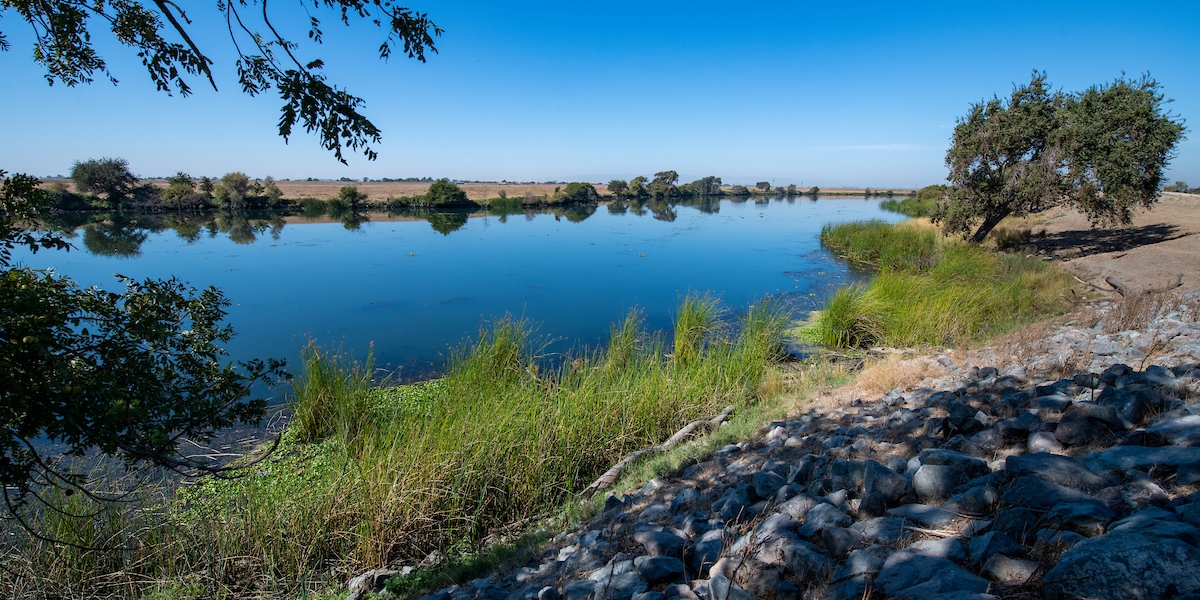The Department of Water Resources filed its Certification of Consistency for the Lookout Slough Tidal Habitat Restoration and Flood Improvement Project on December 30, 2021, finding that the project is consistent with the Delta Stewardship Council’s Delta Plan. On January 31st, appeals were filed by Liberty Island Access and Solano County Water Agency.
If this sounds vaguely familiar, the Department of Water Resources first filed its Certification of Consistency for the Lookout Slough project previously in spring of 2021; the certification was subsequently appealed by Liberty Island Access, Solano County Water Agency, Reclamation District 2060 & Reclamation District 2068, and the Central Delta Water Agency. Portions of the appeal, largely those regarding public access and recreational opportunities, were upheld and the project was remanded to the Department of Water Resources for reconsideration in July of 2021. So, the Department of Water Resources has regrouped and submitted a new Certification of Consistency.
 Certification of Consistency – what’s this?
Certification of Consistency – what’s this?
The Delta Reform Act requires any state or local agency proposing to undertake a covered action must submit to the Council a written certification of consistency with the Delta Plan. The legislation basically defines a covered action as a plan, program, or project that a state or local agency proposes to do within the Delta and Suisun Marsh that is covered by one or more provisions of the Delta Plan.
Any person – be it a Council member, an agency, or a member of the public – who believes a covered action is inconsistent with the Delta Plan and will impact the achievement of the coequal goals may appeal a certification of consistency to the Council within 30 days of the submission date. The appeal paperwork must clearly state the basis for the claim that the covered action is inconsistent with the Delta Plan.
What is being appealed
Liberty Island Access, a network of anglers, hunters and other outdoor enthusiasts who
recreate at the Liberty Island Ecological Reserve (“LIER”) and the nearby Shag Slough, appeals again with concerns over recreational access. The appeal letter acknowledges the Department’s efforts to study recreational access, but states nothing much has changed.
“The Project still has two central failures which put it in contradiction with the Delta Plan.
First, the Project conflicts with existing local land use. Second, the Project fails to consider or propose any mitigation measures for the loss of recreation facilities,” the appeal letter states. “For these reasons, DWR’s
Project is inconsistent with the Delta Plan.”
The Solano County Water Agency letter once again states that the project does not support the coequal goals; rather, it would improve conditions for the Central Valley Project and State Water Project operations at the sole expense and detriment of Solano County interests. The letter notes the numerous existing agricultural and municipal water supply intakes in the area of the proposed project, and states that the supporting documents do not adequately resolve with respect to water quality, endangered species, and the corresponding cumulative adverse impacts of the significant restoration projects that have occurred in the region.
The appeal letter states that Solano County Water Agency is not necessarily seeking to stop the project; Instead, they would like to work collaboratively with the Council, Department of Water Resources (DWR), and/or other agencies to meet coequal goals throughout the entire Delta. The Agency is also looking for financial support to help implement the North Bay Aqueduct Alternative Intake Project, as recommended by the Delta Plan. The letter states that the filing of this second appeal demonstrates the Agency’s commitment to improving the implementation of this Project through collaboration and mitigation.
“The Agency submits this second appeal in hopes this Council will recognize the potential of this Project to exacerbate already significant issues of invasive species proliferation and lack of mitigation for increased fish restoration in the same areas Agency intakes are located,” the letter states.
It’s worth noting that in November of 2021, the Solano County Board of Supervisors voted 5-0 to support the project.
What happens now?
The Council will issue a preliminary determination and schedule a public hearing. The appellant, the state or local agency, the Delta Protection Commission, or any other person may testify before the Council regarding an appeal, either orally or in writing. The Council has 60 days to decide on the appeal after the hearing and will make specific written findings defining the covered action under review. The Council can either deny the appeal or remand the matter back to the agency, finding that the certification of consistency is not supported by substantial evidence in the record.
By my count, in the history of the Council, four appeals have been filed that have gone through a staff determination and a public hearing. In 2018, the Department of Water Resources withdrew its consistency determination after the staff determination would have remanded to project back to the Department. Also, in 2018, the Smith Canal Gate Project was appealed; that appeal was denied and the project allowed to go forward.



